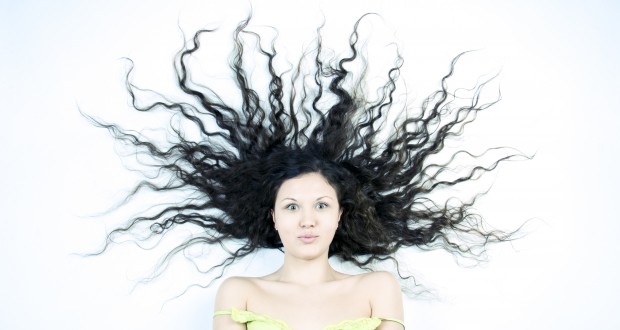By: Red Hot Mamas
Published: May 12, 2016
Contributed by Barb Dehn NP, NCMP, Women’s Health Nurse Practitioner- Red Hot Mamas Medical Expert
At menopause many women begin to notice some not-so-subtle changes in their hair. There’s too much hair where they don’t want it and not enough where they do. It’s distressing, confusing, and maddening. The texture and color are also likely to be different as hormonal changes play out in our hair. Many lucky women have great hair throughout their lives: terrific texture with never a wayward hair on chins or necks. It’s pure luck, and picking the right grandparents, of course, because genetics plays a huge role. Then there’s the rest of us, who might see a shadow on our upper lips or coarse dark hairs sprouting from our chins. We may notice that our hair is thinner on our heads and that there’s more left swirling in the shower drain or in the hairbrush. I am of Italian descent, which means thick eyebrows and also more hair on my neck, chin and upper lip. It’s not fun for me or anyone else, and I’ve tried lots of different hair removal techniques and recommended them to patients.
Let me introduce you to a patient Emmi, who has a very common and frustrating challenge with unwanted hair growth. Her story may help you if you’re dealing with unwanted hair. Emmi had beautiful thick, dark, arching eyebrows and long dark lashes. Each morning, she had her tweezers at the ready, searching in the magnifying mirror for any stray hairs that had sprouted up overnight, threatening to mar the perfection of her brows. Since menopause, her chin was driving her mad. As she drove to work each day, she’d stroke her chin, feeling for any telltale stubble. It was embarrassing, because without the magnifying mirror, she could barely see it, but knew that anyone under forty could.
When Emmi came in for her annual exam, she asked about treatments for unwanted hair When I looked at Emmi’s chin and neck, I could only see a few dozen hairs scattered around the entire area. Unlike some of my other patients, who have hundreds of hairs and would be good candidates for laser hair removal, I could see that Emmi would have good results with electrolysis, which was much less expensive. She found that within six months of regular electrolysis visits, she was completely free of dark stubble and only used her tweezers for her eyebrows.
THE NITTY-GRITTY ON HAIR
The hair we see on the outside of the skin is only a tiny portion of the entire length of the individual hair. There’s approximately one-sixteenth to an eighth of an inch of hair that lies just below the surface of the skin embedded in the hair follicle. The hair follicle holds what appears to be a tiny bulb of hair at the very end. When hair is removed by plucking, waxing, or threading, it normally takes six weeks to three months for the hair follicle to completely reactivate and produce a new hair. Even though you’ll see new hairs cropping up every day, each follicle needs time to rest, recharge, and replace the strand of hair.
Hormonal fluctuations are responsible for an increase in hair growth on the face, neck, and chin at menopause. Never doubt the power of hormones! As estrogen levels swing from one extreme to another, androgenics, or male-type hormones, such as DHEA and testosterone, can also fluctuate. These androgenic hormones stimulate more rapid reactivation of hair follicles that may have been asleep prior to menopause. As the androgenic hormone levels fluctuate, women may notice a sudden crop of a few dozen new chin hairs. Women who notice a sudden change or extreme amounts of new hair growth should see their healthcare practitioners for evaluation as this may signal a more serious hormonal fluctuation from an overactive ovary, thyroid gland, or adrenal gland that’s not a result of menopause. Women who notice more hair growth may also notice that their skin is oilier and their adolescent acne has returned. Thankfully, most of these beauty challenges can be managed with a few tips I’m including here.
Nurse Barb’s Hair-Removal Tips
* Prevention is the best strategy for unwanted hair removal. Before the hair turns gray, consider laser treatment, which only works on dark hair. Unfortunately, gray hair doesn’t have any pigment and thus can’t absorb the heat from a laser, which means that the gray hair will continue to grow even if the area is treated with a laser.
* Electrolysis is another effective permanent solution; however, some hair follicles need to be zapped several times. Use Emla, a prescription anesthetic cream prior to electrolysis to reduce the pain.
* Vaniqa is a prescription product that helps slow down hair growth. It also works well when combined with laser treatment.
* Threading and waxing are effective ways of pulling out hair by the root. However, this can cause the hair to grow in thicker and coarser over time.
* Contrary to what you’ve heard, occasional shaving when you can’t wax or use other better methods won’t cause permanent, thick, coarse stubble. Regular shaving, however, isn’t a good long-term solution due to the upkeep.
* Invest in a good magnifying mirror. As you become more dependent upon reading glasses, you won’t be able to see offending hairs as easily in a regular mirror.
I hope this helps. My book, The Hot Guide to a Cool Sexy Menopause has more helpful tips about all aspects of Menopause. (link: http://www.amazon.com/Hot-Guide-Cool-Sexy-Menopause/dp/1591203716 ) You can also find more information at my website, NurseBarb.com
 Red Hot Mamas In Charge of Change.
Red Hot Mamas In Charge of Change.




